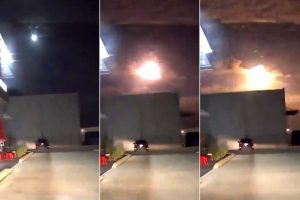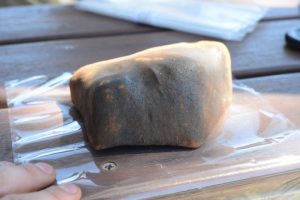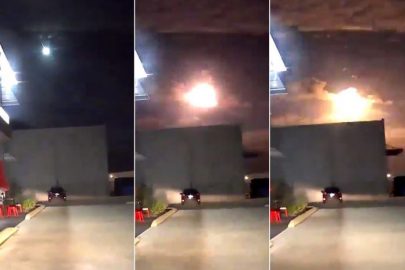The sky above Perth and the surrounding area was lit up overnight by a fireball that is believed to have been a meteor entering the atmosphere.
The Department of Fire and Emergency Services started receiving calls at 7:40pm from people who said they had seen a fireball streak across the sky.
More than one concerned caller suggested it could be a UFO while others were more concerned the flash could start a fire.
The Perth Observatory was sent dozens of videos taken from CCTV cameras and dash cams which captured the phenomenon.

‘They were thinking the sky was falling’
Social media was inundated with reports from people in the Avon Valley region who said they thought they felt the meteor hit the earth.
Rosena Cox lives in Caljie, 125 kilometers east of Perth, and was in the shower when she heard a sound that she thought was a plane crashing.
Robyn Garratt, from the town of York 100km east of Perth, was among those who witnessed the incident.
“We heard the boom, we saw the light, we just thought it was lightning to start with, but the boom that came after it was definitely not thunder,” she told ABC Radio Perth.
“In York, people felt a lot more than that. They all went running outside thinking the sky was falling, basically.”
The fireball search begins
Scientists from Curtin University have been scrambling to determine if and where the meteor hit the ground.
Director of the Desert Fireball Network, Professor Phil Bland, said initial observations indicated there was a fair chance the object made it to Earth.
“It was unusually bright so it must have been a big object, so that is really exciting,” he said.
“It also looks like we’ve seen it on multiple cameras which means that we’ll be able to triangulate exactly how it came in through the atmosphere, what its position was, what its speed was, what its size was [and] work out where it came from in the solar system, and if any of it landed.”
‘Hearing sonic booms is a really big deal’
The Fireball Network monitors meteors that enter the atmosphere and also tracks those that land so they can be recovered and studied.
Professor Bland said most meteors traveled incredibly fast and completely burned up in the earth’s atmosphere — with only about 2–3 per cent of those that were visible ever making it to the ground.
To stay intact through the earth’s atmosphere a meteor has to be relatively large and also needs to travel slower than about 4 kilometers per second.
“The average velocity at the top of the atmosphere is 17 kilometers per second — if it got down to about 4 it probably survived,” Professor Bland said.
The Desert Fireball Network expected to be able to calculate a location of the meteorite’s landing before the end of the day.
Once a location was pinpointed, immediate attempts to recover the meteorite would begin.
“Meteorites are a great scientific resource in terms of working out how the solar system formed and how it evolved,” Professor Bland said.
“When we actually have that context and we’re able to say ‘this comes from the outer solar system’ or ‘this comes from near Mars’ that’s so useful. So when we find one it’s an incredible experience and just putting your hands on that is a fantastic moment.
“It’s very emotional as well as scientifically satisfying.”
In 2016 the Desert Fireball Network recovered a 1.15 kilogram meteorite which landed near Morawa in WA.

Source: abc
Ask me anything
Explore related questions





